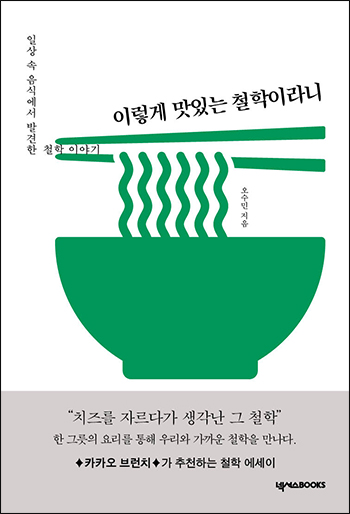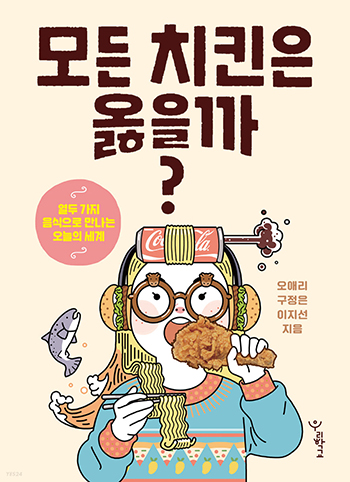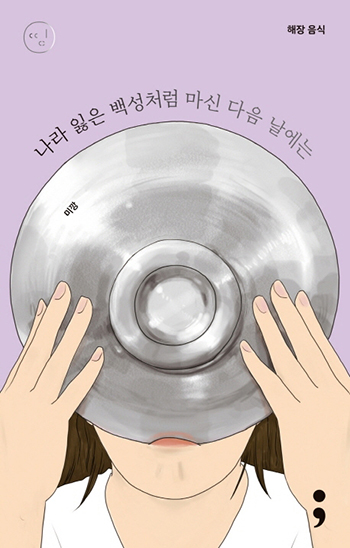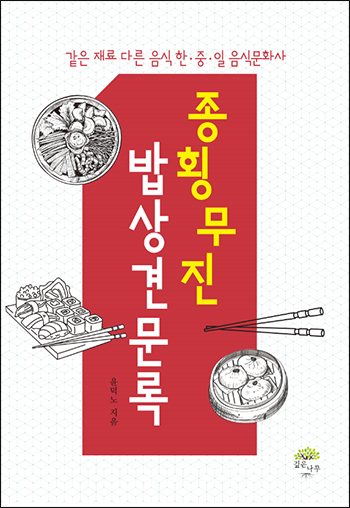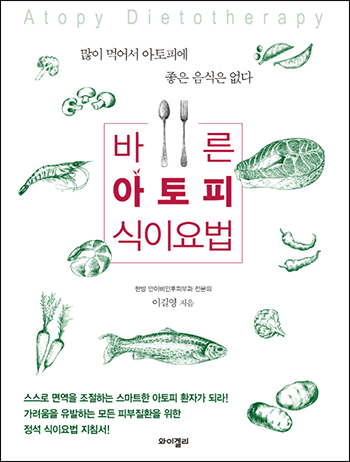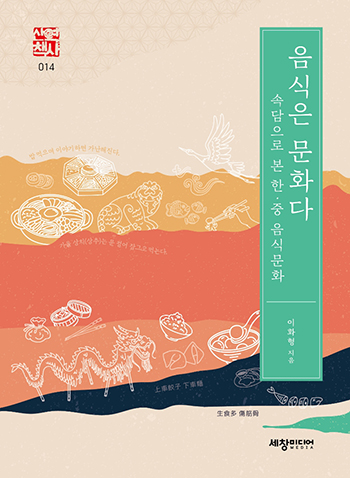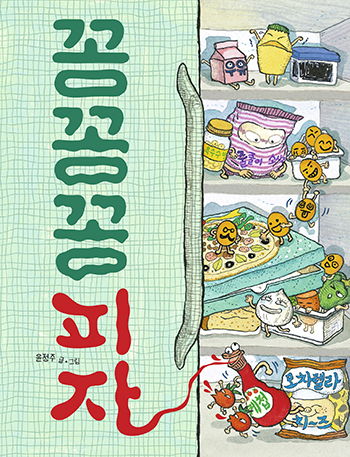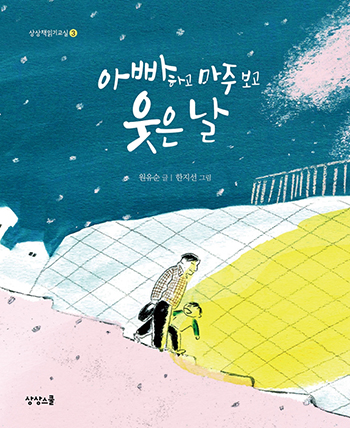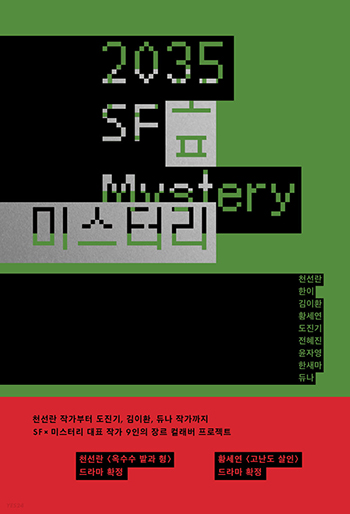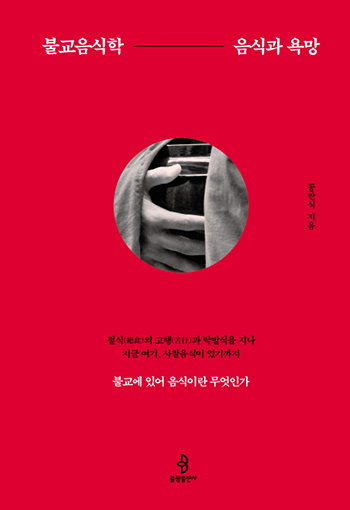|
#K-Book
#Food KPIPA Introduces K-Books for Global Publishing Markets through K-Book Platform
2023.08.07
Tasty Philosophy
1. Publication Details
Title | Tasty Philosophy
2. Copyright Contact
Name | Hyejin Chung
3. Book Intro
This book is a philosophy book that starts not with concepts, but with food. Watching bungeoppang (fish-shaped buns) being baked nice and brown, smelling the scent of Delimanjoo in the subway station, frying “backroom” chicken instead of ordering fried chicken… the writer discovered philosophical elements and wrote of philosophical concepts and philosophers in line with such experiences. No matter what the filling, the buns baked in the bungeoppang pan are all bungeoppang. Here, the writer recalled what Kant refers to as “reason,” the ability to know. A person’s ability for scientific knowledge is accepting the world through a “pan” that already takes a certain form. Does that mean that we cannot experience the raw world as it is, yet to be molded by this “pan of reason”? Is it impossible for a world to exist outside this cognition framework, this bungeoppang pan? * k-book.or.kr/user/books/books_view?idx=2737
Is Chicken Always Right?
1. Publication Details
Title | Is Chicken Always Right?
2. Copyright Contact
Name | Cho Eojin
3. Book Intro
Food is the most basic resource for survival, the symbol and identity of a culture, a major industry in the economic structure, and more importantly, a crucial part of our lives. Woorischool’s new release, Is Chicken Always Right? explores the world and humanity through the food that Korean teenagers love the most—chicken, pizza, burgers, cola, instant noodles, jjajangmyeon, noodles, beef, curry, salmon, mango, and chocolate. These 12 beloved food items allow readers to both taste and feel interesting topics encompassing history, the economy, society, the environment, ecology, animal rights, and the capital flows of big food companies. The journalists-turned-writers who have spent their careers out in the field delivering a variety of social news, will here introduce the hidden truths and key controversies around the world through food. How did they end up on our table? How were they first made, and how did they begin to take up such an important part of our lives? What are the histories or stories behind them? This book selects the foods that Korean teenagers love in particular, to delve into the social/cultural/economic contexts and issues. It also touches upon current food-related problems as well as the global effort to tackle them for a better future. These delicious and amusing stories of food will guide us into the world today. * k-book.or.kr/user/books/books_view?idx=6574
THE DAY AFTER BINGE DRINKING
1. Publication Details
Title | THE DAY AFTER BINGE DRINKING
2. Copyright Contact
Name | Song Ji-young
3. Book Intro
THE DAY AFTER BINGE DRINKING: A SELF-EXPERIMENT ON HANGOVER FOODS is all about author Miggang’s real-life episodes behind “hangover foods”. But this essay isn’t only about hangover foods—it’s also about everything that Koreans love, as you can probably guess from its chapter titles: Naengmyeon, noodles, Yang Pyeong hangover soup, spicy food, dumplings, blood sausage soup, and the list goes on... The book is a record of Miggang experimenting with hangover cures. The writer, who is more known for her creative works as a webtoon illustrator, fully boasts of her writing skills throughout the book and provides engaging and thrilling experiences with her scrumptious writing style that readers will love. Her vivid sense of imagination will make laugh, surprise you, and even move you to tears. Her words are never flowery or vague; rather, they’re very down-to-earth and intimately related to our everyday lives. If the book left you with the urge to drink just so you can have hangover food, or reminded you to ask those around you about how they’re dealing with their own morning afters, then its mission has been fully accomplished. * k-book.or.kr/user/books/books_view?idx=4666
A Travelogue of Meals
1. Publication Details
Title | A Travelogue of Meals
2. Copyright Contact
Email | bookocean@naver.com
3. Book Intro
For Koreans, the smell of the dotted gizzard shad grilling in the autumn stimulates the appetite so much that there’s a saying that it will even “lure back a daughter-in-law who has run away from home.” But for Japanese people, there’s no worse odor than that smell. From ancient times in Korea, the small yellow croaker was one of the most popular side dishes for a meal. But in China, the large yellow croaker, which Koreans denounce as a “fake croaker,” is more exorbitantly expensive. Koreans consider eggplants to be a rather boring vegetable but in China, it has been praised since the olden days as a “vegetable grown in the mountains where Taoist hermits with miraculous powers live.” The Japanese believed that you will have great luck if you see an eggplant in the dream you dream on the first day of the new year. * k-book.or.kr/user/books/books_view?idx=2128
Proper Atopy Diet
1. Publication Details
Title | Proper Atopy Diet
2. Copyright Contact
Name | Cho Dongwook
3. Book Intro
Principles of diet based on 20 years of medical know-how from a Korean Medicine doctor specializing in atopy! * k-book.or.kr/user/books/books_view?idx=2147
Cuisine is Culture
1. Publication Details
Title | Cuisine is Culture
2. Copyright Contact
Name | Kim Myonghee
3. Book Intro
Korean and Chinese culinary culture revolve around consideration for others. A good example is a difficulty of finishing the last piece of food left on a platter. The two cultures share the idea that “food and medicine share the same origin,” a concept that is manifested in an emphasis on seasonal dishes. Both Korea and China enjoy a balanced diet with the main starch - either rice or noodles - served with various side dishes. * k-book.or.kr/user/books/books_view?idx=5650
Fridge Family Makes a Pizza
1. Publication Details
Title | Fridge Family Makes a Pizza
2. Copyright Contact
Name | Min Yuree
3. Book Intro
Tonight, Mom is late coming home because of work. Song-i and her father orders and eats pizza for dinner. Pizza is Song-i’s favorite food. She is barely able to keep herself from eating the last slice of pizza so she could save it for her mother. But the pizza she put in the refrigerator disappears. The eggs in the fridge had tossed the pizza box to save the bread stuck underneath, but then the pizza box is nowhere to be seen. Knowing this, the eggs get ready to cheer up Song-i, who is sure to be disappointed by the missing pizza. Will it be possible to make hot pizza in a cold refrigerator? * k-book.or.kr/user/books/books_view?idx=4528
The Day I Looked at My Dad and We Smiled to One Another
1. Publication Details
Title | The Day I Looked at My Dad and We Smiled to One Another
2. Copyright Contact
Name | Eunmi Yoon
3. Book Intro
Family love which embraces our shortcoming and faults and innocent children’s mind that moves us * k-book.or.kr/user/books/books_view?idx=417
The 2035 SF Mystery
1. Publication Details
Title | The 2035 SF Mystery
2. Copyright Contact
Name | Bae Jeongeun - Greenbook Agency, Foreign Rights
3. Book Intro
A convergence of science fiction, a genre that contemplates the future of humankind at the forefront of the era, and a mystery that studies the depth of humanity. The project stemmed from the idea to have writers representing each of their fields imagine the near future where the aftermath of COVID-19 has come to an end. At its basic themes, the book illustrates what could happen if factors such as human clones, refugee accommodation, genome editing, teleportation, and megalopolis emerge in our world. * k-book.or.kr/user/books/books_view?idx=6552
Food in Buddhism
1. Publication Details
Title | Food in Buddhism
2. Copyright Contact
Name | Yang Minho
3. Book Intro
Food culture plays an important role in Buddhism, which relates to the problem of identity of Buddhism. The problems of food and desire comprise a cosmology in Buddhism; that is, they not only relate to the ultimate attitude of a Buddhist but also constitute a part of the discipline system. So how can we follow how food means this in Buddhism? * k-book.or.kr/user/books/books_view?idx=3873
#Food#KPIPA#K-Book |
Pre Megazine
-

Projects Supported by the KPIPA in the First Half of 2024
VOL.69
2024.04 -

Philosophy Changes Weather
VOL.69
2024.04 -

2nd Week, March 2024
VOL.69
2024.04 -

#Sky
VOL.69
2024.04 -

Agency list
VOL.69
2024.04 -

Surrender, Earth Creatures
VOL.68
2024.03 -

3rd Week, February 2024
VOL.68
2024.03 -

#School
VOL.68
2024.03 -

Killer-content Exhibition at the 2024 Bologna Children’s Book Fair
VOL.68
2024.03 -

Agency list
VOL.68
2024.03 -

Paik’s Korean Liquor
VOL.67
2024.02 -

4th Week, January 2024
VOL.67
2024.02 -

Minjeong Jeong
VOL.67
2024.02 -

#Start
VOL.67
2024.02 -

Agency list
VOL.67
2024.02 -

Hyeon Jeong Lee
VOL.66
2024.01 -

Agency list
VOL.66
2024.01 -

We Won’t Leave the Earth
VOL.66
2024.01 -

#Winter
VOL.66
2024.01 -

1st Week, December 2023
VOL.66
2024.01 -

My Time Does Not Flow Like Yours
VOL.65
2023.12 -

2nd Week, November 2023
VOL.65
2023.12 -

Konishi Naoko
VOL.65
2023.12 -

#Flower
VOL.65
2023.12 -

Wrap-up Summary of the 2023 Sharjah International Book Fair: Korean Pavilion
VOL.65
2023.12 -

2023 Korea Picture Book Award
VOL.65
2023.12 -

Agency list
VOL.65
2023.12 -

The Only One
VOL.64
2023.11 -

2nd Week, October 2023
VOL.64
2023.11 -

Yoojin Lee
VOL.64
2023.11 -

#Book Fair
VOL.64
2023.11 -

Sharjah International Book Fair 2023: Korean Pavilion
VOL.64
2023.11 -

Agency list
VOL.64
2023.11 -

Things I Couldn’t Throw Away Again
VOL.63
2023.10 -

2nd Week, September 2023
VOL.63
2023.10 -

Li Xia
VOL.63
2023.10 -

#Autumn
VOL.63
2023.10 -

Agency list
VOL.63
2023.10 -

The Baobab and the Snail
VOL.62
2023.09 -

2nd Week, August 2023
VOL.62
2023.09 -

Kang Bang-Hwa
VOL.62
2023.09 -

2023 Visiting Korean Book Fair in Paris
VOL.62
2023.09 -

Agency list
VOL.62
2023.09 -

#Photograph
VOL.62
2023.09 -

The Sound of Summer
VOL.61
2023.08 -

3rd Week, July 2023
VOL.61
2023.08 -

Slin Jung
VOL.61
2023.08 -

#Food
VOL.61
2023.08 -

Agency list
VOL.61
2023.08 -

Brilliant Regards
VOL.60
2023.07 -

2nd Week, June 2023
VOL.60
2023.07 -

HOANG HAI VAN
VOL.60
2023.07 -

#Life
VOL.60
2023.07 -

Titles Selected for the Overseas Publication Grants 2023
VOL.60
2023.07 -

Agency list
VOL.60
2023.07 -

Together, and There Shall be the Path
VOL.59
2023.06 -

2nd Week, May 2023
VOL.59
2023.06 -

XIAO ZHUANG
VOL.59
2023.06 -

#Dream
VOL.59
2023.06 -

Agency list
VOL.59
2023.06 -

I’m in Tongyeong
VOL.58
2023.05 -

2nd Week, April 2023
VOL.58
2023.05 -

2023 Visiting Korean Book Fair in Tokyo
VOL.58
2023.05 -

Moon Chakage
VOL.58
2023.05 -

#Love
VOL.58
2023.05 -

Agency list
VOL.58
2023.05 -

UN HE PAIK
VOL.57
2023.04 -

Joseon Art Museum
VOL.57
2023.04 -

2nd Week, March 2023
VOL.57
2023.04 -

#SF
VOL.57
2023.04 -

2023 Overseas Publication Grants
VOL.57
2023.04 -

Agency list
VOL.57
2023.04 -

Books Sotheby’s Loved
VOL.56
2023.03 -

3rd Week, February 2023
VOL.56
2023.03 -

Lee Tae-Yeon
VOL.56
2023.03 -

#Companion Animal
VOL.56
2023.03 -

Agency list
VOL.56
2023.03 -

Agency list
VOL.55
2023.02 -

Always Smile
VOL.55
2023.02 -

3rd Week, January 2023
VOL.55
2023.02 -

Helen Cho
VOL.55
2023.02 -

#Travel in Korea
VOL.55
2023.02 -

Killer-content Exhibition at the 2023 Bologna Children’s Book Fair
VOL.55
2023.02 -

2023 Future Science Trends
VOL.54
2023.01 -

1st Week, December 2022
VOL.54
2023.01 -

Sandy Joosun Lee
VOL.54
2023.01 -

#2022 K-Book Copyright Market
VOL.54
2023.01 -

Agency list
VOL.54
2023.01 -

The Age of Daughters
VOL.53
2022.12 -

2nd Week, November 2022
VOL.53
2022.12 -

VO THI KHANH LAN
VOL.53
2022.12 -

#Mystery & Thriller
VOL.53
2022.12 -

Agency list
VOL.53
2022.12 -

You’re Light
VOL.52
2022.11 -

2nd Week, October 2022
VOL.52
2022.11 -

Kaparushkina Diana (Jang Diana)
VOL.52
2022.11 -

#Library
VOL.52
2022.11 -

2022 K-Book Copyright Market
VOL.52
2022.11 -

Agency list
VOL.52
2022.11 -

Eun Hye’s Hug
VOL.51
2022.10 -

2nd Week, September 2022
VOL.51
2022.10 -

Kong Yuan
VOL.51
2022.10 -

#Self-Esteem
VOL.51
2022.10 -

Agency list
VOL.51
2022.10 -

Tube
VOL.50
2022.09 -

2nd Week, August 2022
VOL.50
2022.09 -

Alyssa Kim
VOL.50
2022.09 -

#Environment & Climate Change
VOL.50
2022.09 -

Killer-Content Exhibition at the 2022 Göteborg Book Fair
VOL.50
2022.09 -

Agency list
VOL.50
2022.09 -

Post-Mobility
VOL.49
2022.08 -

2nd Week, July 2022
VOL.49
2022.08 -

Ji-Hyun PARK, CELESTIN
VOL.49
2022.08 -

#2022 Visiting Korean Book Fair - Indonesia
VOL.49
2022.08 -

Agency list
VOL.49
2022.08 -

Titles Selected for the Overseas Publication Grants 2022 (Results)
VOL.49
2022.08 -

2022 Visiting Korean Book Fair in Tokyo
VOL.48
2022.07 -

It’s Time to Say Goodbye
VOL.48
2022.07 -

1st Week, June 2022
VOL.48
2022.07 -

Park Kyeong-Hee
VOL.48
2022.07 -

#Friendship
VOL.48
2022.07 -

Agency list
VOL.48
2022.07 -

Agency list
VOL.47
2022.06 -

Today’s Jaram
VOL.47
2022.06 -

2nd Week, May 2022
VOL.47
2022.06 -

Mi Hyun Kim
VOL.47
2022.06 -

#Picture Books
VOL.47
2022.06 -

Words Without Heart
VOL.46
2022.05 -

2nd Week, April 2022
VOL.46
2022.05 -

Jin Jin-Joo
VOL.46
2022.05 -

#Science - Children’s Books
VOL.46
2022.05 -

Seoul International Book Fair 2022
VOL.46
2022.05 -

Agency list
VOL.46
2022.05 -

Queen of Words
VOL.45
2022.04 -

2nd Week, March 2022
VOL.45
2022.04 -

Gi Jang
VOL.45
2022.04 -

#K-Webtoon Fantasy
VOL.45
2022.04 -

South Korea the Guest of Honor at the 2022 Bogota International Book Fair (FILBO)
VOL.45
2022.04 -

Agency list
VOL.45
2022.04 -

Winners of the 2022 Bologna Ragazzi Award
VOL.44
2022.03 -

Metaverse Sapiens
VOL.44
2022.03 -

2nd Week, February 2022
VOL.44
2022.03 -

Bae Yang-Soo (裵凉秀)
VOL.44
2022.03 -

#K-Webtoon Slice of Life/Romance
VOL.44
2022.03 -

2021 Translation Grants for Publications (Results)
VOL.44
2022.03 -

Agency list
VOL.44
2022.03 -

Yeoni and Willow Bachelor
VOL.43
2022.02 -

3rd Week, January 2022
VOL.43
2022.02 -

Sungrye Han (한성례, 韓成禮)
VOL.43
2022.02 -

#K-Webtoon Drama
VOL.43
2022.02 -

2022 Visiting Korean Book Fair
VOL.43
2022.02 -

Agency list
VOL.43
2022.02 -

Agency list
VOL.42
2022.01 -

NINE
VOL.42
2022.01 -

1st Week, December 2021
VOL.42
2022.01 -

Amber Hyun Jung Kim
VOL.42
2022.01 -

#K-Drama
VOL.42
2022.01 -

2022 Overseas Publication Grants
VOL.42
2022.01 -

Agency list
VOL.41
2021.12 -

KPIPA joined the 2021 Guadalajara International Book Fair
VOL.41
2021.12 -

#Cooking
VOL.41
2021.12 -

Seung Joo-Yeoun
VOL.41
2021.12 -

09:47
VOL.41
2021.12 -

1st Week, November 2021
VOL.41
2021.12 -

Before Overtaxing Oneself
VOL.12
2019.06 -

South Korea's May Bestsellers
VOL.12
2019.06 -

Export Prospects of Korean Books
VOL.12
2019.06 -

Science Cookie
VOL.13
2019.07 -

South Korea's June Bestsellers
VOL.13
2019.07 -

Export Prospects of Korean Books
VOL.13
2019.07 -

The Story of Dolphin
VOL.14
2019.08 -

South Korean Bestsellers in July
VOL.14
2019.08 -

Export Prospects of Korean Books
VOL.14
2019.08 -

Export Prospects of Korean Books
VOL.15
2019.09 -

South Korean bestsellers in August
VOL.15
2019.09 -

Kakao Friends Essay Series
VOL.15
2019.09 -

Export Prospects of Korean Books
VOL.16
2019.10 -

South Korean bestsellers in September
VOL.16
2019.10 -

The Science of Conception
VOL.16
2019.10 -

Stranger Museum
VOL.40
2021.11 -

Agency list
VOL.40
2021.11 -

KPIPA Joins the 2021 China Shanghai International Children’s Book Fair (CCBF)
VOL.40
2021.11 -

#Poem
VOL.40
2021.11 -

Yoon Sunme
VOL.40
2021.11 -

2nd Week, October 2021
VOL.40
2021.11 -

Export Prospects of Korean Books
VOL.17
2019.11 -

South Korean bestsellers in October
VOL.17
2019.11 -

Bamboo Yoga
VOL.17
2019.11 -

Export Prospects of Korean Books
VOL.18
2019.12 -

South Korean bestsellers in November
VOL.18
2019.12 -

Fish in the water
VOL.18
2019.12 -

2019 South Korea-China Publishing Copyright Exchanges Event
VOL.18
2019.12 -

Export Prospects of Korean Books
VOL.19
2020.02 -

3rd Week, January 2020
VOL.19
2020.02 -

Elementary Science Q2 Please take care of the Earth
VOL.19
2020.02 -

Export Prospects of Korean Books
VOL.20
2020.03 -

3rd Week, February
VOL.20
2020.03 -

Social Impact
VOL.20
2020.03 -

Export Prospects of Korean Books
VOL.21
2020.04 -

2nd Week, March
VOL.21
2020.04 -

Plants for those who are suffering
VOL.21
2020.04 -

Agency list
VOL.39
2021.10 -

K-Book Promotion Event
VOL.39
2021.10 -

#Adolescent Literature
VOL.39
2021.10 -

WANG TSE YU
VOL.39
2021.10 -

2nd Week, September 2021
VOL.39
2021.10 -

The Sun Is Radiant, and Life Is Precious
VOL.39
2021.10 -

Agency list
VOL.38
2021.09 -

Announcement on 2021 K-Book Translation Contest
VOL.38
2021.09 -

#Preference & Hobby
VOL.38
2021.09 -

Oka Hiromi
VOL.38
2021.09 -

2nd Week, August 2021
VOL.38
2021.09 -

Summer
VOL.38
2021.09 -

Export Prospects of Korean Books
VOL.22
2020.05 -

2nd Week, April
VOL.22
2020.05 -

What is this line for?
VOL.22
2020.05 -

2020 Online Meetings with Indonesian Publishers
VOL.23
2020.06 -

#Science and Humanities
VOL.23
2020.06 -

3rd Week, May
VOL.23
2020.06 -

Alexandra Kim, la sibérienne
VOL.23
2020.06 -

#Environment
VOL.24
2020.07 -

3rd Week, June
VOL.24
2020.07 -

Three Generations of Railworkers
VOL.24
2020.07 -

Agency list
VOL.37
2021.08 -

I Play, Therefore I Am
VOL.37
2021.08 -

Announcement on 2021 K-Book Translation Contest
VOL.37
2021.08 -

Anton Hur
VOL.37
2021.08 -

#Travel in KOREA
VOL.37
2021.08 -

2nd Week, July 2021
VOL.37
2021.08 -

2020 Overseas Publication Grants
VOL.25
2020.08 -

#Minorities in society
VOL.25
2020.08 -

2nd Week, July
VOL.25
2020.08 -

Green Tangerine
VOL.25
2020.08 -

2020 Korea-Indonesia Online Meeting
VOL.26
2020.09 -

#2020 Moscow International Book Fair(Picture Books)
VOL.26
2020.09 -

3rd Week, August
VOL.26
2020.09 -

Space Created by Space
VOL.26
2020.09 -

K-Book Copyright Fair Online
VOL.27
2020.10 -

#K-Book Copyright Fair Online
VOL.27
2020.10 -

1st Week, September
VOL.27
2020.10 -

The Whole House Clean-Out Services for Dead Men
VOL.27
2020.10 -

Fridge Family Defeats Zombies
VOL.36
2021.07 -

Agency list
VOL.36
2021.07 -

Jamie Chang
VOL.36
2021.07 -

Overseas Publication Grants 2021
VOL.36
2021.07 -

#Fantasy Webnovel
VOL.36
2021.07 -

3rd Week, June 2021
VOL.36
2021.07 -

K-Book Copyright Fair Online
VOL.28
2020.11 -

#Feminism
VOL.28
2020.11 -

3rd Week, October 2020
VOL.28
2020.11 -

1 Minute Science
VOL.28
2020.11 -

K-Book Copyright Fair Online
VOL.29
2020.12 -

#Traditional Culture(Picture Books)
VOL.29
2020.12 -

2nd Week, November 2020
VOL.29
2020.12 -

Regarding Starknitting
VOL.29
2020.12 -

#Trend & Marketing
VOL.30
2021.01 -

1st Week, December 2020
VOL.30
2021.01 -

See What They Mean, Say What You Mean
VOL.30
2021.01 -

2021 Overseas Publication Grants
VOL.31
2021.02 -

#Hanbok
VOL.31
2021.02 -

3rd Week, January 2021
VOL.31
2021.02 -

Celltrionism
VOL.31
2021.02 -

2021 VISITING KOREAN BOOK FAIR
VOL.32
2021.03 -

Pit-a-Pat with Acorn
VOL.32
2021.03 -

2nd Week, February 2021
VOL.32
2021.03 -

#Learning Cartoon Books
VOL.32
2021.03 -

Winners of the 2021 Bologna Ragazzi Award
VOL.35
2021.06 -

Agency list
VOL.35
2021.06 -

One Day, Death Spoke to Life
VOL.33
2021.04 -

How To Draw Without Being Afraid
VOL.35
2021.06 -

2nd Week, March 2021
VOL.33
2021.04 -

#Mystery Thriller Crime
VOL.33
2021.04 -

#Celebrity’s Essay
VOL.35
2021.06 -

3rd Week, May 2021
VOL.35
2021.06 -

Snowstorm
VOL.34
2021.05 -

Agency list
VOL.34
2021.05 -

K-BOOK Platform User Guide
VOL.34
2021.05 -

2021 K-Book Copyright Fair Online
VOL.34
2021.05 -

#Essay
VOL.34
2021.05 -

2nd Week, April 2021
VOL.34
2021.05


